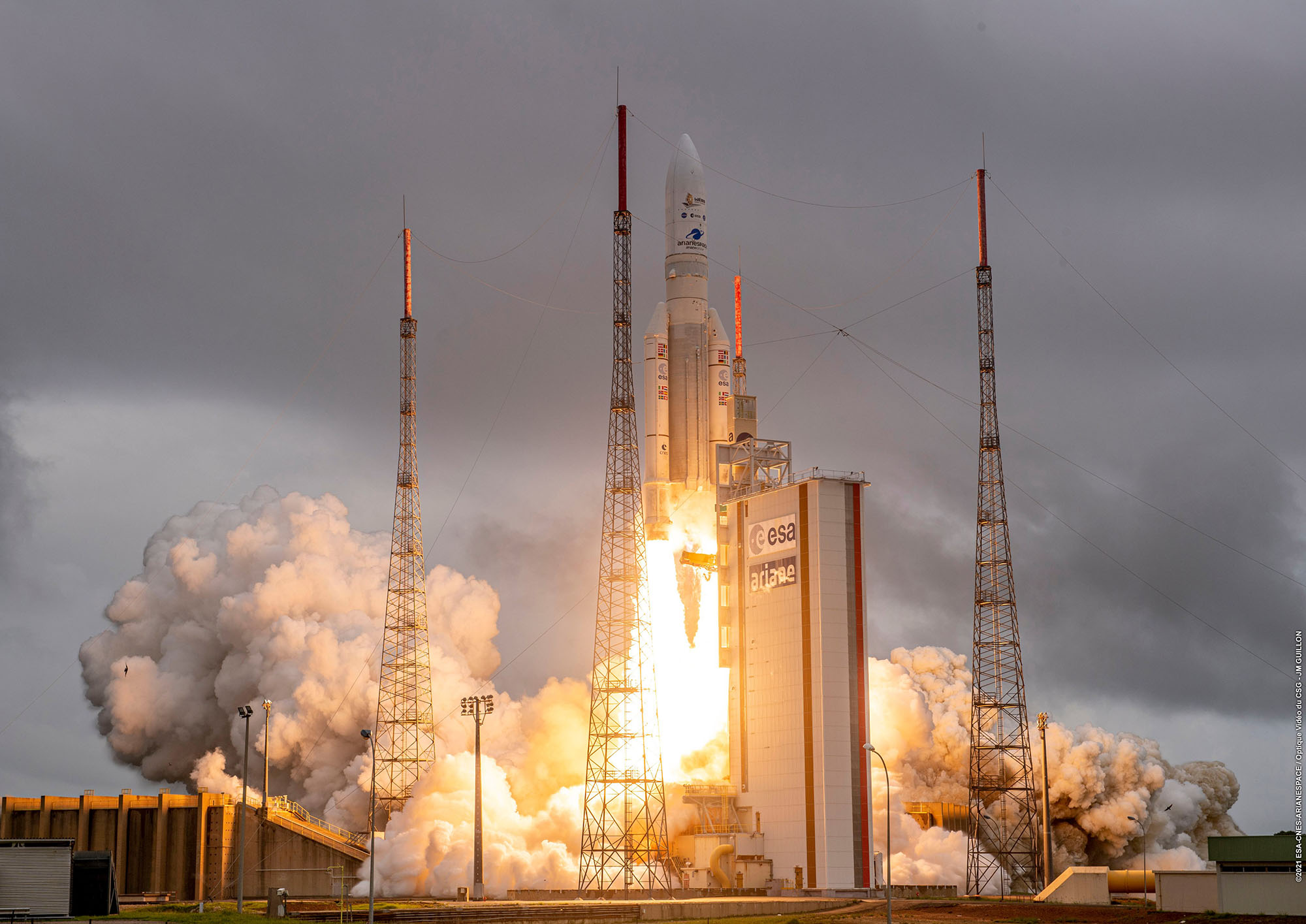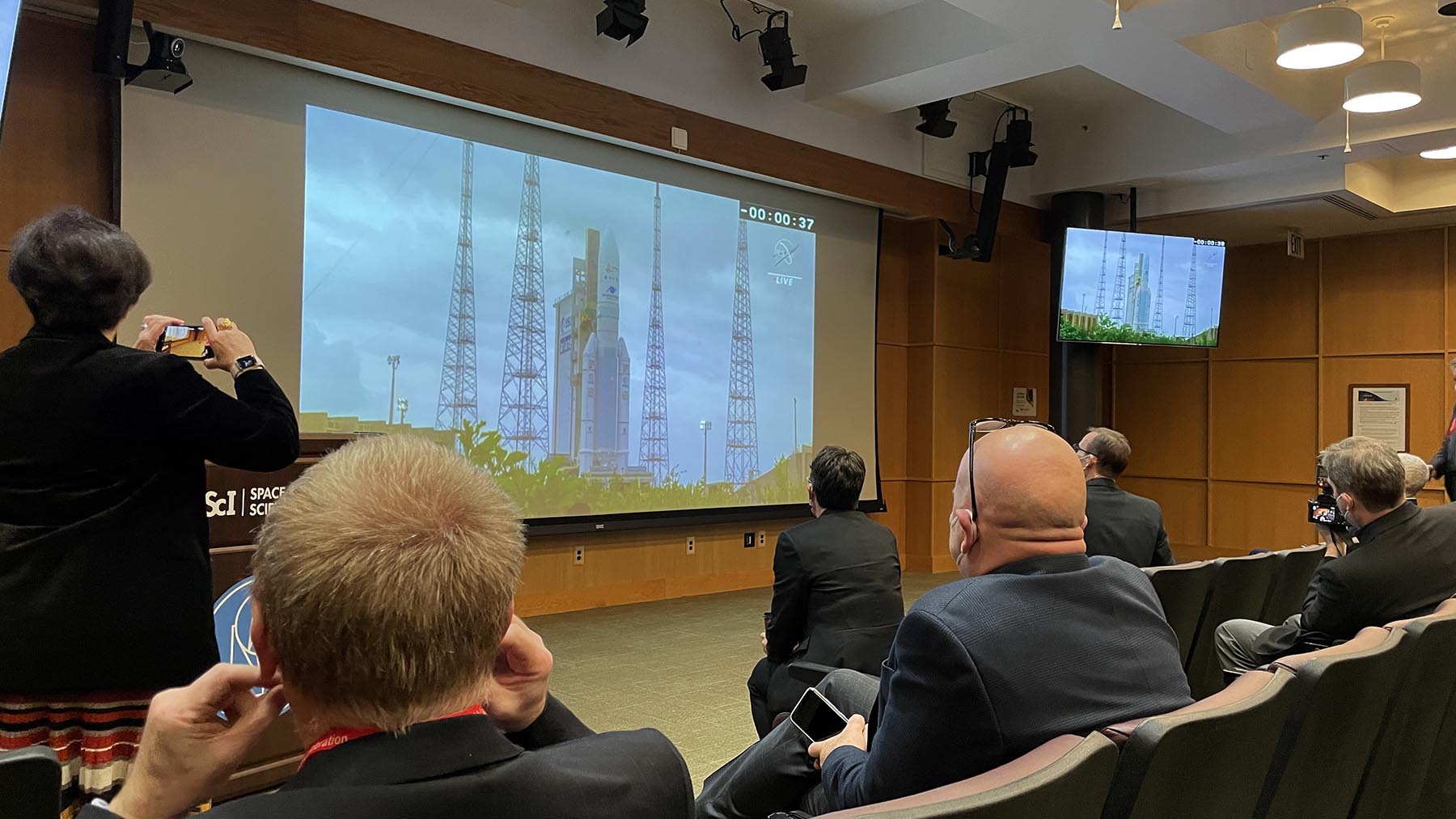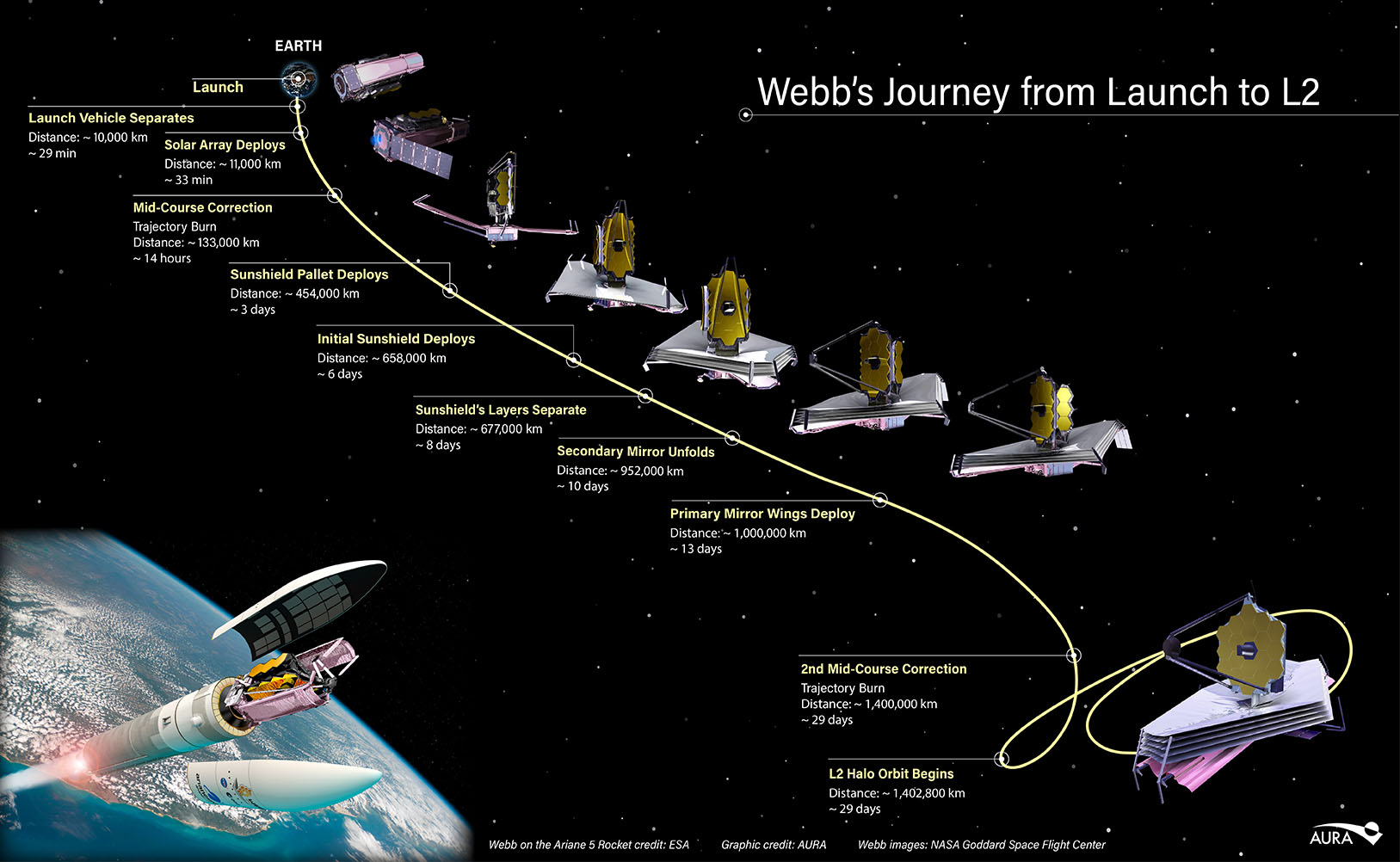Webb Begins its Journey on ESA’s Ariane 5 Rocket!

A Perfect Launch!
Today, December 25, 2021, NASA’s James Webb Space Telescope successfully blasted off from the European Space Agency’s launch site in Kourou, French Guiana and started the month-long journey to its new home, 1 million miles from Earth. The Ariane 5 rocket released the Webb telescope about 26 minutes after launch in an optimal trajectory for its 29-day trip to the second Lagrange point (L2) point.
Matt Mountain, AURA president and Webb Telescope Scientist said, “I am thrilled by today’s launch! There is still a lot that needs to happen before Webb can begin delivering science, but we had to get the telescope launched into space first, and we are now on our way to L2. After over 20 years of development and the immense efforts of thousands of incredibly talented and committed people, getting Webb launched is a remarkable achievement.”
Deployment and Commissioning from Space Telescope Science Institute
Webb — with its 6.5-m (21-ft) mirror made of 18 gold-coated hexagons and its tennis-court sized sunshield — was folded up to fit inside the rocket for launch. Now, Webb’s components will start unfolding as the telescope travels to L2. Over the next month, a carefully choreographed deployment must happen in a specific order for the telescope to function correctly once it arrives.
JWST’S JOURNEY TO L2 JWST’s journey from launch to the Sun-Earth L2 point will be filled with a steady stream of spacecraft activities, from unfurling the sunshield (starting 3 days after launch) to unfolding the telescope mirror (13 days after launch). Image: AURA / S. Lifson
Space Telescope Science Institute (STScI), located in Baltimore Maryland and managed by AURA, is the home of Webb operations and serves as the science community’s interface to the telescope. The STScI Mission Operations Center is where engineers will control and monitor Webb as it deploys and travels to its destination.
“The team at Space Telescope Science Institute (STScI) is fully prepared to commission the observatory and is eagerly anticipating a new era of astronomical research,” said Kenneth Sembach, Director of STScI. “We have practiced every step of the telescope deployment sequence over and over again. We will initiate and monitor more than 300 unique activities and 50 major deployments over the next month to ensure an optimally functioning telescope and prepare to bring Webb’s four science instruments online.”
Webb’s L2 destination, 1 million miles from Earth, is a gravitationally stable location in space relative to the Earth and the Sun. After Webb’s arrival at L2, the telescope will take five months to prepare for science. During that time, the Webb team will: ensure that the telescope cools down to operating temperature, fine-tune the mirror alignment, and calibrate its scientific instruments. About six months after launch, Webb will be ready to send its first science images to Earth.

Seeing the Universe in Infrared
The telescope is designed to observe the Universe in infrared light instead of visible light, to detect very faint objects that are extremely far away or shrouded in dust.
“The Webb telescope is exquisitely sensitive and will show us completely new parts of the Universe we have never seen before,” said John Mather, JWST Senior Project Scientist at NASA’s Goddard Space Flight Center. “It is so sensitive it could see a bumblebee floating in space at the distance of the Moon from the Earth.”
New Tech for Amazing Science
Webb is the most complicated observatory we have ever sent into space, and its cutting-edge technology will also enable Webb’s unique science objectives. Those objectives – witnessing the first light in the early Universe; understanding how galaxies evolve over cosmic time; observing the birth of stars and planetary systems; examining our own Solar System; and characterizing worlds in other planetary systems (exoplanets) that might harbor life – will be the focus of the scientists using Webb in the coming years.
“The science teams are all eagerly waiting to start their research with Webb,” said Heidi Hammel, a Webb Interdisciplinary Scientist and Vice President for Science at AURA. “The first science will include observations of Jupiter, exoplanets, black holes, formation of galaxies and more.”
Congratulations Webb Team!
But today, AURA celebrates Webb’s launch. Congratulations to the thousands of people whose hard work culminated in today’s successful launch. We will be watching closely as Webb passes each milestone and gets closer to operations. Please join us for an exciting voyage!

